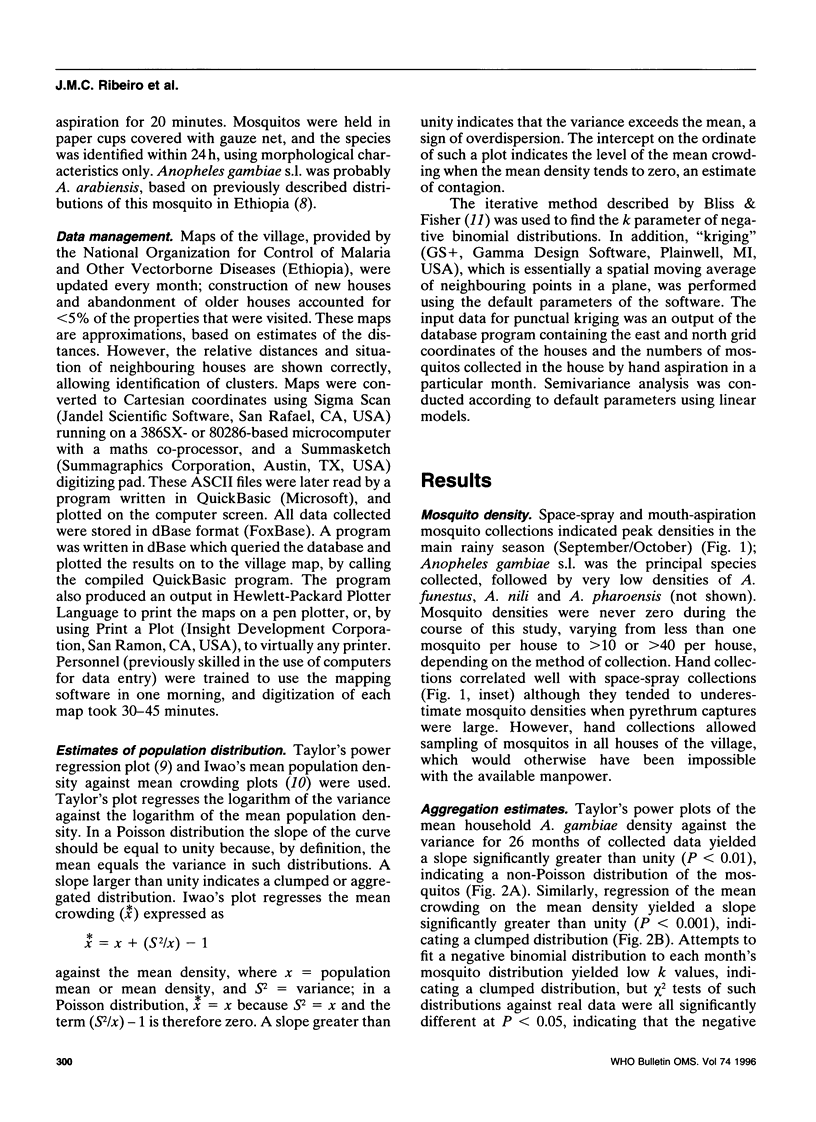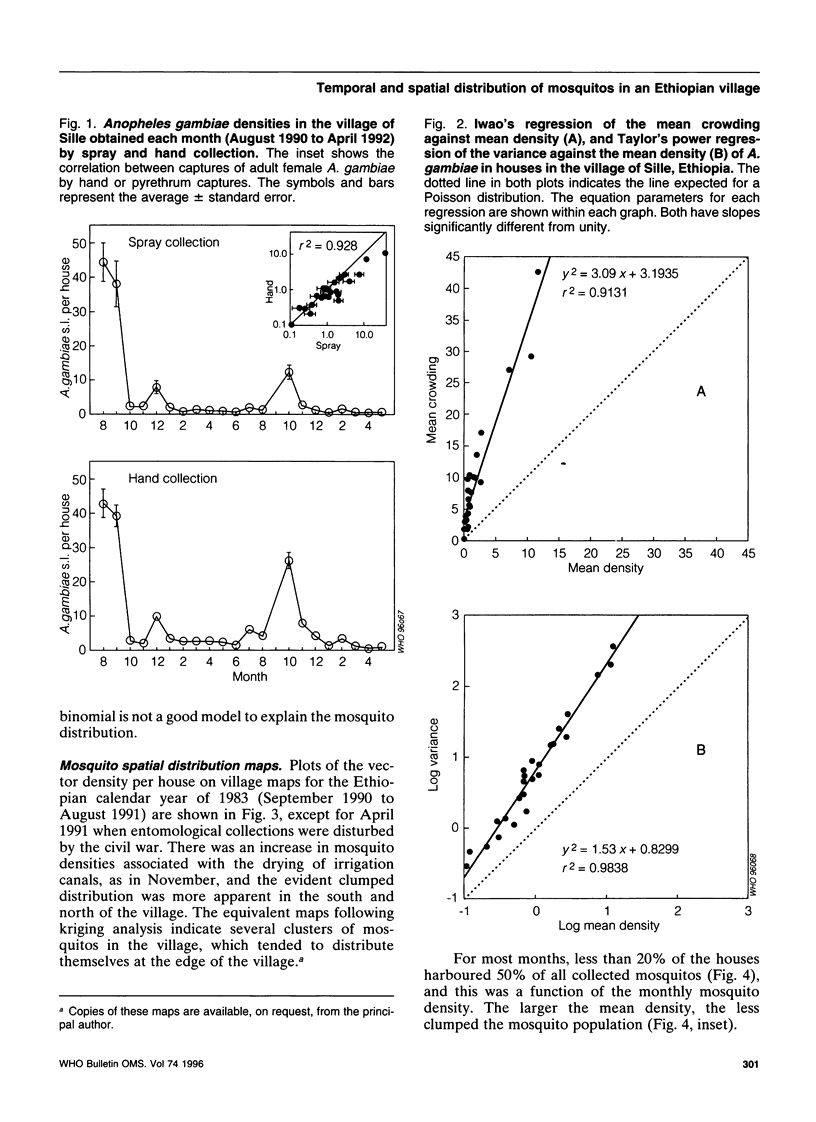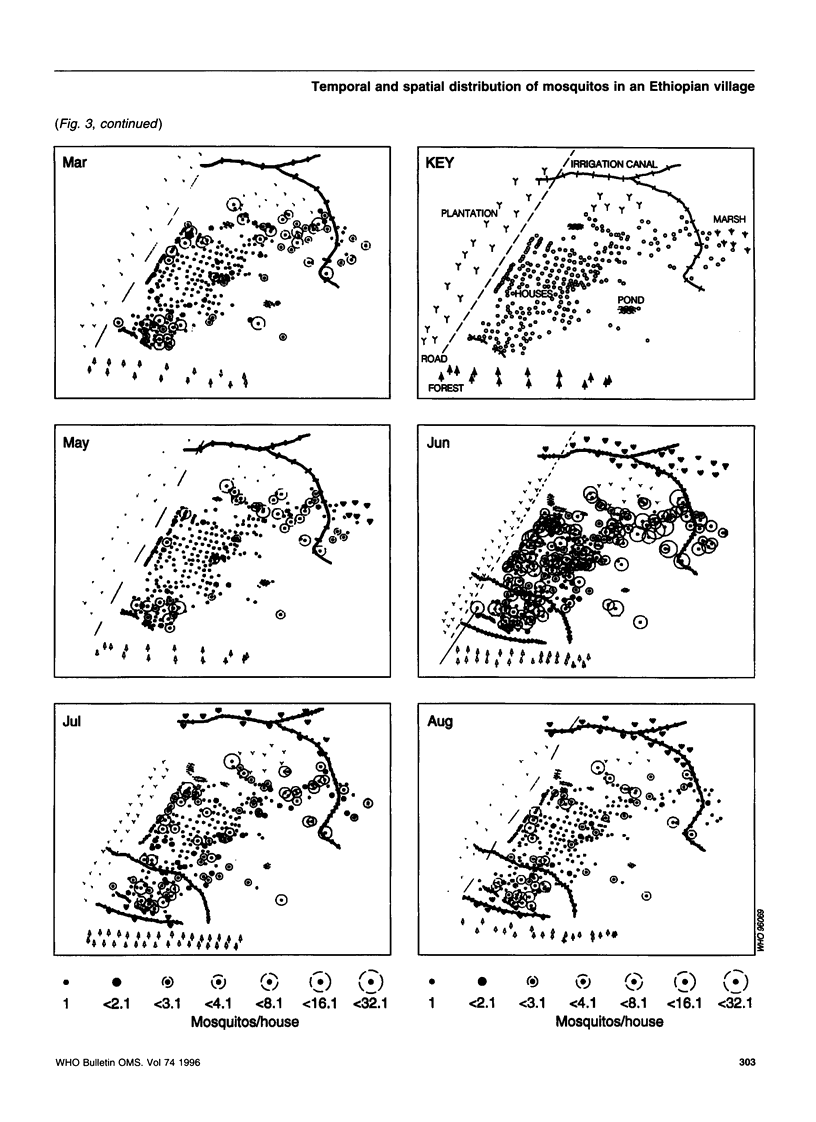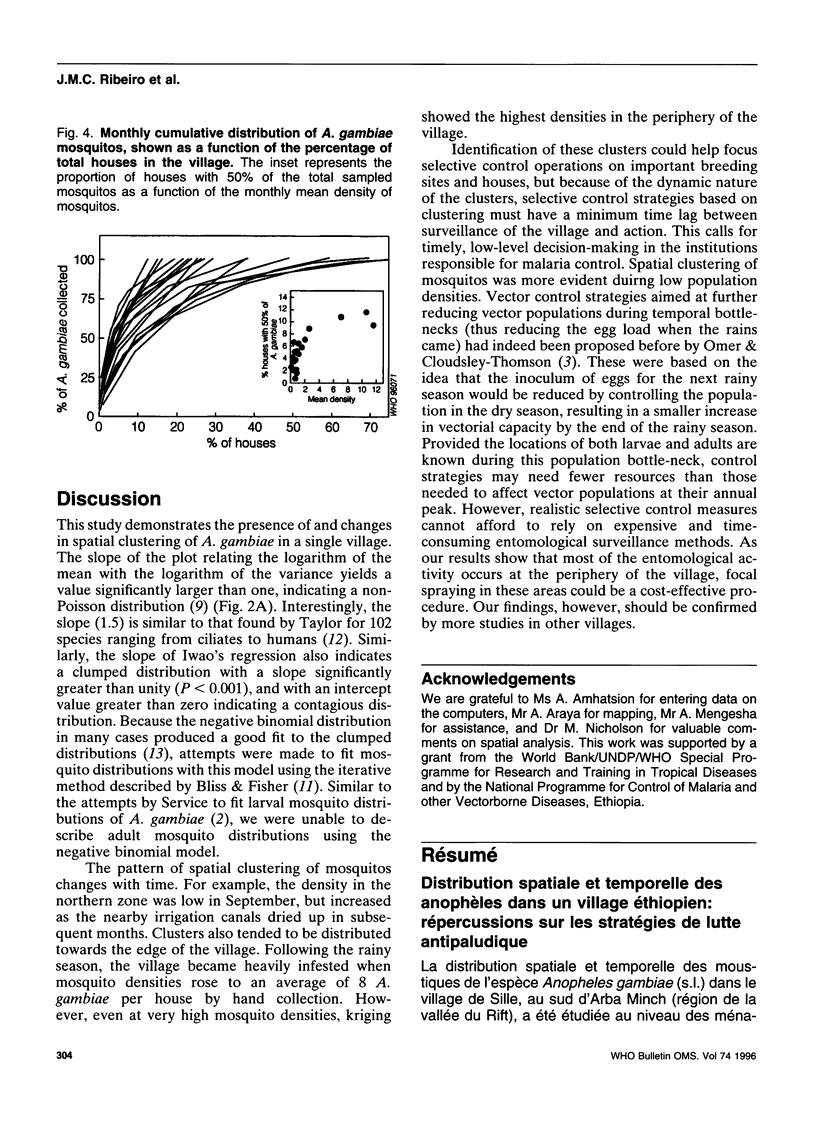Abstract
The spatial and temporal distribution of Anopheles gambiae mosquitos in houses in the village of Sille in Ethiopia was monitored in 1990-91. Monthly mosquito densities in over 300 houses were obtained, and the data for each month were plotted on maps, which indicated clustering of mosquitos within the village. Spatial analysis using "kriging" techniques demonstrated clustering towards the edges of the village, the pattern of which changed with time. For example, the low density of mosquitos in one area in September increased as the nearby irrigation canals dried up during the following months. Since most entomological activity occurred at the periphery of the village, focal spraying of these areas could be a cost-effective procedure. If such clustering occurs in other villages, selective control of breeding sites and indoor spraying could provide a more efficient use of limited resources than traditional total coverage.
Full text
PDF






Selected References
These references are in PubMed. This may not be the complete list of references from this article.
- Hasibeder G., Dye C. Population dynamics of mosquito-borne disease: persistence in a completely heterogeneous environment. Theor Popul Biol. 1988 Feb;33(1):31–53. doi: 10.1016/0040-5809(88)90003-2. [DOI] [PubMed] [Google Scholar]
- Kitron U., Jones C. J., Bouseman J. K., Nelson J. A., Baumgartner D. L. Spatial analysis of the distribution of Ixodes dammini (Acari: Ixodidae) on white-tailed deer in Ogle County, Illinois. J Med Entomol. 1992 Mar;29(2):259–266. doi: 10.1093/jmedent/29.2.259. [DOI] [PubMed] [Google Scholar]
- Omer S. M., Cloudsley-Thompson J. L. Survival of female Anopheles gambiae Giles through a 9-month dry season in Sudan. Bull World Health Organ. 1970;42(2):319–330. [PMC free article] [PubMed] [Google Scholar]
- Service M. W. Studies on sampling larval populations of the Anopheles gambiae complex. Bull World Health Organ. 1971;45(2):169–180. [PMC free article] [PubMed] [Google Scholar]
- White G. B. Anopheles gambiae complex and disease transmission in Africa. Trans R Soc Trop Med Hyg. 1974;68(4):278–301. doi: 10.1016/0035-9203(74)90035-2. [DOI] [PubMed] [Google Scholar]
- Zukowski S. H., Wilkerson G. W., Malone J. B., Jr Fasciolosis in cattle in Louisiana. II. Development of a system to use soil maps in a geographic information system to estimate disease risk on Louisiana coastal marsh rangeland. Vet Parasitol. 1993 Mar;47(1-2):51–65. doi: 10.1016/0304-4017(93)90175-m. [DOI] [PubMed] [Google Scholar]


